publications
publications by categories in reversed chronological order. generated by jekyll-scholar.
2025
-
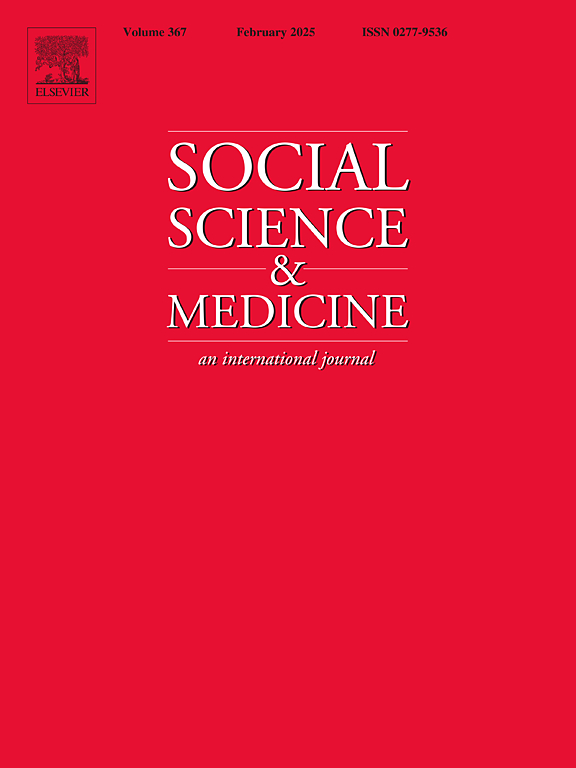 ‘Care as Capital’: Developing theory about school investment in mental health and wellbeingRebecca Johnson, Camille Allard, Colette Soan, and 2 more authorsSocial Science and Medicine, 2025
‘Care as Capital’: Developing theory about school investment in mental health and wellbeingRebecca Johnson, Camille Allard, Colette Soan, and 2 more authorsSocial Science and Medicine, 2025Recent years have seen an emphasis on delivering mental health and wellbeing support in school settings. However, the process by which schools meet this resource allocation challenge is largely undocumented. Our study used theory-building process tracing to develop a mechanistic understanding of the process of mental health investment in schools. We conducted in-depth case study work with four school sites in England, comprising 29 interviews and the retrieval and analysis of 95 documents. The empirical work was used to develop process theories to explain how and why high-investing schools allocated resources to wellbeing and mental health. Our work suggested high mental health investment was catalysed by either a perceived need or a change in ethos. The decision-making process then proceeded with some elements that aligned with conventional rational choice models (such as the comparison of alternatives) but also some important differences. Notably schools reacted to tradeoffs by seeking alternative, often informal, sources of funding and support for initiatives. In doing this they could develop “care capital” and enter a virtuous cycle of network building and investment. While this theory requires further exploration in other settings, it maybe be useful for researchers and policy-makers seeking to better understand how to support schools in allocating resources for mental health and wellbeing. In particular, it suggests that schools may benefit from support in how to harness external resources for mental health and wellbeing equitably and efficiently, alongside making best use of their internal resources.
-
 Mental health and wellbeing priority setting: a study of evidence use in schools in EnglandCamille Allard, Rebecca Johnson, Sally O’Loughlin, and 1 more authorSocial Science and Medicine, 2025
Mental health and wellbeing priority setting: a study of evidence use in schools in EnglandCamille Allard, Rebecca Johnson, Sally O’Loughlin, and 1 more authorSocial Science and Medicine, 2025Educational settings represent an important site for mental health and wellbeing (MHWB) investment, with an upsurge in research evidence to support such investments. However, the way in which schools use evidence to support priority setting has not been widely documented. This article focuses on how, in practice, English schools use evidence in investing in MHWB initiatives. We conducted exploratory interviews and document analysis with decision-makers and stakeholders across four schools (two primary and two secondary). Five themes were derived to explain how school decision-makers select and use evidence (i) ‘context, needs, and ideology’; (ii) ‘internal and external data for self-management’; (iii) ‘experiences and expertise’; (iv) ‘evidence to inform and challenge’; and (v) ‘external social networks to access evidence’. The findings show the non-linear, interactive, role of evidence in schools, and how evidence is used via a ‘political model’, when decision-makers use research to back-up their position. Researchers seeking to inform resource allocation decisions in school settings may wish to work with interactive or political models of evidence use to increase the uptake of the evidence they generate.
-
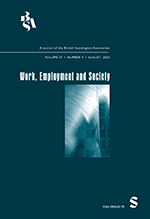 How Care Inequalities are Reproduced in ‘Carer-Friendly’Jobs: The Case of Employer-Led Carer’s LeaveCamille AllardWork, Employment and Society, 2025
How Care Inequalities are Reproduced in ‘Carer-Friendly’Jobs: The Case of Employer-Led Carer’s LeaveCamille AllardWork, Employment and Society, 2025This article investigates how working carers – workers with care responsibilities for a long-term ill, ageing or disabled relative – negotiate their care responsibilities when employed in a ‘carer-friendly’ job with access to paid carer’s leave. Based on narrative interviews with 17 working carers in the UK, the article explores how the availability of carer’s leave influences carers’ perception and legitimisation of their roles as ‘carers’ within their families. By drawing on, and extending Acker’s concept of ‘inequality regimes’, the article uncovers the organisational processes, discourses of legitimisation and normative pressures that shape carers’ roles both in their workplaces and at home. It argues that having a job supported by a ‘carer-friendly’ employer – but without a right to statutory paid carer’s leave – can reinforce the normative perceptions of ‘who’ should be a carer at home.
2024
-
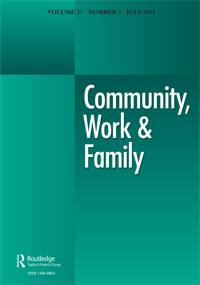 The impact of autonomy at work on dementia family carers’ ability to manage care-related emergencies, and use technology to that end: Semi-structured interviews in ScotlandAlice Spann, Camille Allard, Annie-Claude Harvey, and 4 more authorsCommunity, Work & Family, 2024
The impact of autonomy at work on dementia family carers’ ability to manage care-related emergencies, and use technology to that end: Semi-structured interviews in ScotlandAlice Spann, Camille Allard, Annie-Claude Harvey, and 4 more authorsCommunity, Work & Family, 2024Most people with dementia (PwD) are cared for by unpaid family carers, many of whom must balance caring with paid work. This regularly entails dealing with care-related emergencies (CRE). This study aims to explore the impact of carers’ autonomy at work regarding breaks, schedule, and place on their ability to manage CRE, and use technology to that end. We conducted interviews with 16 working carers of PwD in Scotland. Data were analysed thematically to identify key themes. Autonomy at work appeared on a spectrum from no to complete autonomy. Carers’ position on this spectrum was often dynamic and determined by the nature of their work, their workplace culture and regulations, and their line managers’ support – or clients in the case of self-employed carers. Break autonomy allowed carers to use technology to be notified of and delegate the CRE response. Schedule autonomy allowed for an in-person response to CRE. Place autonomy allowed carers to work and care simultaneously, which enabled them to manage CRE immediately but presented them with additional challenges. Distance between workplace and PwD’s residence impacted carers’ ability to manage CRE, despite having complete autonomy. Implications for healthcare professionals, service providers, employers, policymakers, and technology developers are presented.
-
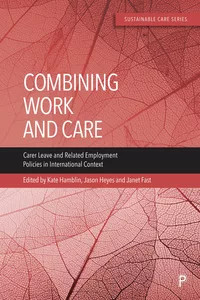 United KingdomKate Hamblin, Jason Heyes, and Camille AllardIn Combining Work and Care: Carer Leave and Related Employment Policies in International Context, 2024
United KingdomKate Hamblin, Jason Heyes, and Camille AllardIn Combining Work and Care: Carer Leave and Related Employment Policies in International Context, 2024This chapter explores how the UK’s national, social, economic and political contexts have shaped the development of policies for working carers, including the role of carer organisations in influencing policy change. It focuses on the development of care leave and examines how state-led and employer-led care leave policies impact on working carers’ well-being and their ability to reconcile care and work. At the time of writing, the UK policy context is at a key moment for working carers, with a statutory right to five unpaid days of carer leave having recently been introduced. It has, however, been a period of significant political turmoil and, while undoubtedly the introduction of carers’ leave indicates progress, there are questions as to the degree to which carers are valued and supported by social and care policy in the UK.
2023
-
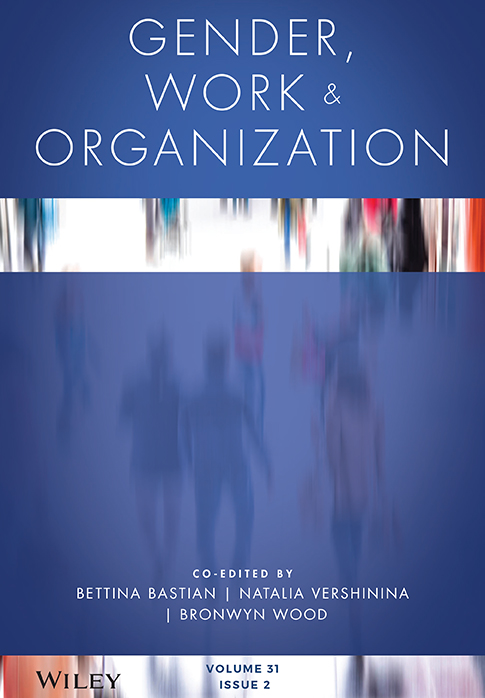 Guilt, care, and the ideal worker: Comparing guilt among working carers and care workersCamille Allard, and Grace J. WhitfieldGender, Work& Organization, 2023
Guilt, care, and the ideal worker: Comparing guilt among working carers and care workersCamille Allard, and Grace J. WhitfieldGender, Work& Organization, 2023This article explores care workers and working carers’ experiences of work. It focuses on how both groups of workers experience pressures to adhere to an ideal, which this article argues, is centered on an emotional reaction of guilt. Through this ideal of a guilty worker, a “care ethic” is reconfigured to become a “work ethic.” Drawing on 120 semistructured interviews with care workers, working carers, trade union officers, and care company managers, the article examines how guilt is experienced and constructed in the workplace, and how it becomes beneficial to the aims of the employing organization. The article links the construction and instrumentalization of guilt to Acker’s analysis of the ideal worker and to the problematic discourse of the “heroism” of key workers during the Covid-19 pandemic. This discourse can reinforce the image of a sacrificial ideal worker; it implies that if workers do not take a sacrificial approach as part of their work and care ethics, they should feel guilty.
-
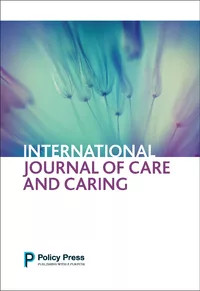 Speaking up as a working carer: working carers’ use of voice and struggles for representation in the workplace.Camille AllardInternational Journal of Care and Caring, 2023
Speaking up as a working carer: working carers’ use of voice and struggles for representation in the workplace.Camille AllardInternational Journal of Care and Caring, 2023Many studies have discussed the challenges of reconciling work and care, but few address the role of carers’ voice in advocating for, and facilitating access to, workplace support. Drawing on qualitative case studies of three large UK organisations, we examine the role of working carers’ voice in the development of a carer’s leave policy at work. Findings indicate that working carers’ voice is shaped by various factors, including available voice mechanisms; workers’ perceptions of their care responsibilities; and stigma, work processes and inequalities. Research implications indicate the need for a more effective representation of working carers through voice channels at work.
2021
-
 Labours of Love: The Crisis of Care by Madeleine Bunting (2020)Camille AllardInternational Journal of Care and Caring, 2021
Labours of Love: The Crisis of Care by Madeleine Bunting (2020)Camille AllardInternational Journal of Care and Caring, 2021 - PhD ThesisTaking the time to care? A study of employer-provided paid carer’s leave in three organisations in the UK.Camille AllardUniversity of Sheffield, 2021
This thesis explores the development and characteristics of employer-led carer’s leave in the UK, and the impact of carer’s leave on the experiences of workers with care responsibilities (’working carers’). Despite a wealth of research on work-care reconciliation, carer’s leave and its potential to strengthen working carers’ rights and visibility has received little attention. This thesis examines the characteristics of employer-led carer’s leave policies and their impact on working carers through an in-depth case study approach of three UK organisations in the public, private and third (voluntary) sectors. A critical realist perspective was adopted, as well as multiple methods including interviews, surveys and document analysis. In total, 65 interviews of working carers, managers, trade union and employee representatives were conducted in addition to documentary analysis of the policies as well as two employee surveys of which generated 41 and 320 responses each. The potential for employer-led carer’s leave to reflect Kittay’s ‘doulia’ right (1999,2021) was critically evaluated through a multi-conceptual framework which included Acker’s intersectional theory of ‘inequality regimes’ (Acker, 1990, 2006a, 2006b) as well as Bourdieu’s theory of Capital (1986). This thesis contributes to knowledge by exploring how the individual’s experience of taking carer’s leave is dependent on both on the job status of the carer as well as an organisation’s interpretation and application of carer’s leave policies. Key findings show that, when accessed, paid carer’s leave has enormous potential to support work and care articulation as it reduces the potential negative effect of using flexible work policies and enhances work quality. Carer’s leave was however not accessed equally throughout the three participant organisations. This was due to a management-led Diversity & Inclusion framework used to introduce carer’s leave which limited the influence of employee voice. This thesis also critically situates working carers’ ability to ‘self-identify’ as carers and access carer’s leave in relation to specific factors, such as their own perspectives on care, labour processes as well as class and gender inequalities. Consequently, employer-led carer’s leave as a ‘doulia’ right is not sufficient to value workers with care responsibilities, as it can fail to acknowledge the way in which work and care are distributed with power and voice disparities in the workplace.
2020
-
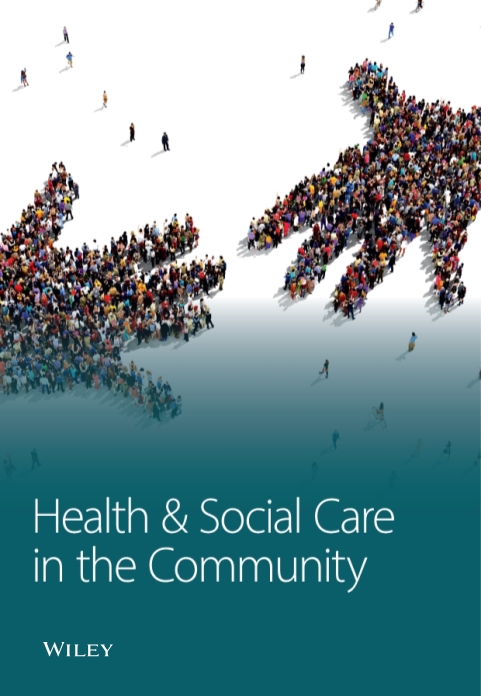 Challenges of combining work and unpaid care, and solutions: A scoping reviewAlice Spann, Joana Vicente, Camille Allard, and 3 more authorsHealth & Social Care in the Community, 2020
Challenges of combining work and unpaid care, and solutions: A scoping reviewAlice Spann, Joana Vicente, Camille Allard, and 3 more authorsHealth & Social Care in the Community, 2020The number of people who combine work and unpaid care is increasing rapidly as more people need care, public and private care systems are progressively under pressure and more people are required to work for longer. Without adequate support, these working carers may experience detrimental effects on their well-being. To adequately support working carers, it is important to first understand the challenges they face. A scoping review was carried out, using Arksey and O’Malley’s framework, to map the challenges of combining work and care and solutions described in the literature to address these challenges. The search included academic and grey literature between 2008 and 2018 and was conducted in April 2018, using electronic academic databases and reference list checks. Ninety-two publications were mapped, and the content analysed thematically. A conceptual framework was derived from the analysis which identified primary challenges (C1), directly resulting from combining work and care, primary solutions (S1) aiming to address these, secondary challenges (C2) resulting from solutions and secondary solutions (S2) aiming to address secondary challenges. Primary challenges were: (a) high and/or competing demands; (b) psychosocial/-emotional stressors; (c) distance; (d) carer’s health; (e) returning to work; and (f) financial pressure. This framework serves to help those aiming to support working carers to better understand the challenges they face and those developing solutions for the challenges of combining work and care to consider potential consequences or barriers. Gaps in the literature have been identified and discussed.
